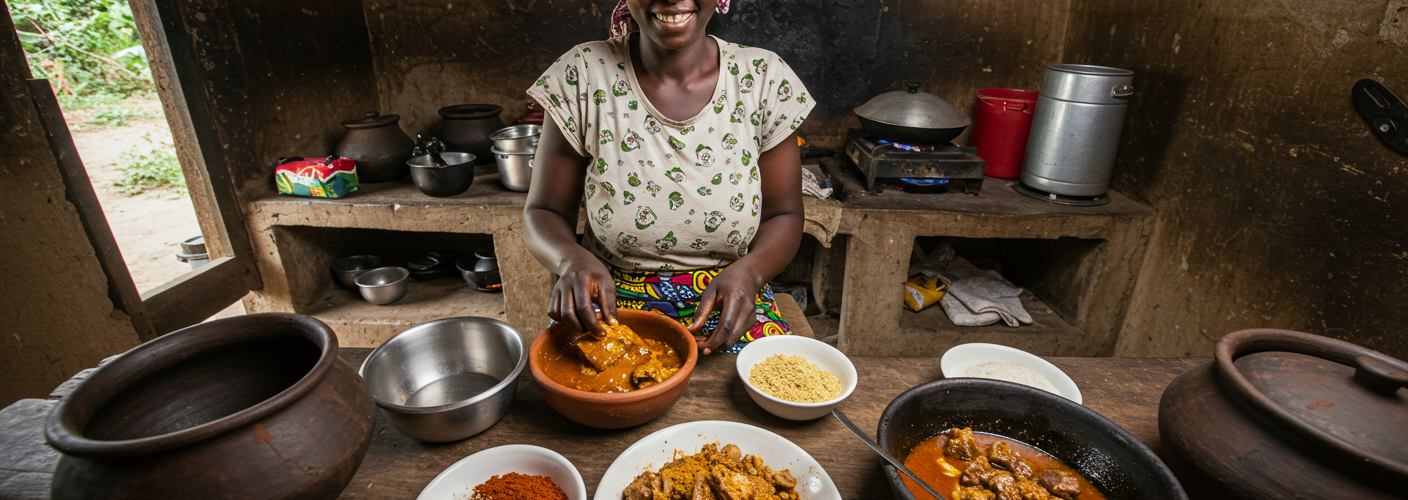Tanzania, a country known for its breathtaking landscapes and vibrant cultures, also boasts a culinary scene that reflects its rich heritage. The food of Tanzania is an incredible blend of flavors, influenced by the various tribes that inhabit the region, as well as the historical exchanges with Arab, Persian, Indian, and European traders. Whether you’re visiting bustling markets in Dar es Salaam or enjoying a traditional meal in a rural village, exploring Tanzanian cuisine is an unforgettable experience.
One staple of Tanzanian food is ugali, a dense porridge made from maize flour and water. This dish is a cornerstone of Tanzanian diets and is often served alongside a variety of stews and vegetables. Eating ugali is a communal activity, where it is customary to tear off pieces with your fingers and use them to scoop up accompanying dishes. It’s a simple yet satisfying comfort food that showcases the essence of Tanzanian dining culture.
Another notable dish is nyama choma, which translates to “grilled meat.” This dish highlights the country’s love for barbecued meats, whether it’s beef, goat, or chicken. Nyama choma is usually enjoyed with a side of kachumbari, a fresh salsa made from tomatoes, onions, and green chili. This vibrant dish embodies the communal spirit of dining in Tanzania, often enjoyed during gatherings and celebrations, where people come together to share food and laughter.
Tanzanian cuisine is not just limited to meat dishes; seafood plays a significant role as well, especially along the coastal regions like Zanzibar. The Indian Ocean offers a bounty of fresh fish and shellfish, making dishes like grilled fish, prawns, or octopus a must-try when visiting these areas. The flavors are often enhanced with spices and marinades reminiscent of the island’s historical trade connections with India and the Middle East.
A unique Tanzanian treat that continues to delight many is the street food known as mkate wa sinia, a type of flatbread that can be found in many street markets. This sweet or savory bread is typically fried and filled with a variety of ingredients, ranging from coconut to spiced meats. The aroma wafting from street vendors often lures passersby, making mkate wa sinia an essential sensory experience when exploring Tanzanian cuisine.
Additionally, the use of local ingredients is a hallmark of the Tanzanian diet. Staples such as beans, rice, cassava, and plantains are often incorporated into meals, providing nutrition and reflecting the agricultural practices that thrive in the region. The fruits of Tanzania, such as mangoes, bananas, and pineapples, also offer a refreshing contrast to the savory dishes, serving as a perfect end to any meal.
In terms of beverages, chai (tea) is particularly popular, especially among the Swahili coast communities. Served with milk, spices, and sometimes sugar, it is not only enjoyed during meals but also throughout the day as a cherished social tradition. Additionally, local brews like pombe (a traditional beer made from fermented millet) are enjoyed during festivities, adding to the rich tapestry of Tanzania’s food culture.
In conclusion, exploring Tanzania’s food is more than just a culinary journey; it is an exploration of the country’s history, culture, and communal spirit. From street food to traditional dishes, the flavors and aromas of Tanzania invite both locals and visitors to partake in a dining experience that is both delicious and memorable. Through its diverse offerings, Tanzanian cuisine invites everyone to savor the heart of this beautiful nation.




Add comment